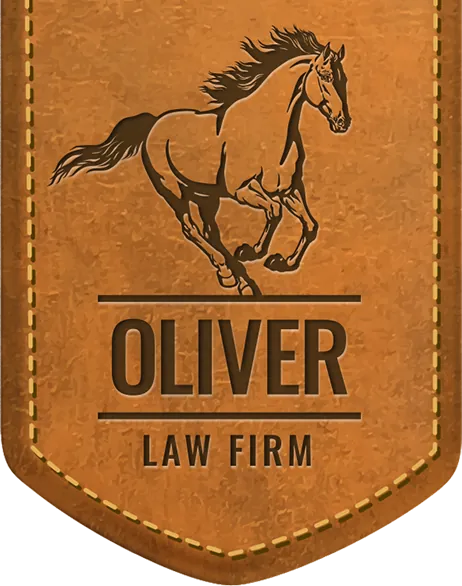
Simple Step No. 3: Prepare Your Documents and Forms
Forms are a series of open-ended questions that are given to focus group at a specific time during the session.[1] Forms can change from focus group to focus group and can be altered in content to fit each case. We recommend the following forms:
Confidentiality and Background Forms: You need the juror to sign a confidentiality agreement. Also, this form asks if they are listed for jury duty. General background information is gathered in this form: work, age, family, address, lawsuits, etc. This is the first thing that jurors fill out when arriving.
Post—Opening Forms: After both sides have given their openings, the jurors fill out these forms. It is a list of open-ended questions asking, “What is this case about?” type questions. DO NOT USE MULTIPLE CHOICE OR CLOSE ENDED QUESTIONS.[2]
Post-Evidentiary Forms: After the second group of statements, the jurors should answer some questions about “how things have changed.” This is the first time in the process we ask the jurors to tell us which way they are leaning in the case. Almost every time, the jurors will be split 50/50. We use this form to decide how to split the group for deliberations. Because we are limited on time, we divide the jurors into groups of six, place them in separate rooms, and video them. We divide the groups as equally as possible with plaintiff and defense jurors to instigate debate. Verdict Form: Ask the juror to make a decision. The verdict forms for a focus group are not like at trial. The verdict form should be simple. Do you find negligence on the part of … if so, divide liability … if so, what are the damages … obviously, each case is slightly different, but overcome the urge to give them a complicated verdict form that may halt feedback due to confusion.
Post-Verdict Form: There are almost always “just go along” jurors. Folks that vote one way or the other to appease or move things along. Also, there are jurors who are mad because the group did not agree with them. There are also the jurors who can convince one or two people, but do not speak up in a group. This form gives these types of jurors the opportunity to voice their concerns and opinions. This form has questions like “What would you have done differently from the group?” and “What would you have liked to have said?”[3]
Simple Step No. 4: Conduct Your Focus Group
Offer your jurors carbohydrates and caffeine. We always have plenty of donuts, cookies, and coffee available for the jurors. We want them energized and awake. Go to an office supply store and buy some nametags, legal pads, and ink pens. I wear a nametag throughout as the moderator and so do the jurors.[4] To learn the most information, you should call everyone by his or her first name. You want jurors taking notes for their own benefit and then you collect their notes at the end. You will need at least 2-3 video cameras and excellent microphones to record all audio. We capture the jurors’ comments and body language on camera for utilization after the focus group.
You could do a focus group by yourself, if necessary; however, we recommend at least three people: moderator, plaintiff’s counsel, and defense counsel. The jurors should never know what side you represent. The moderator and attorneys should not be seen visiting in front of the jurors. The attorneys simply stand up and read the prepared statements. The moderator facilitates the focus group and conducts an open discussion with jurors after each set of statements. A recommended agenda is as follows:
8:45-9:10 a.m.: Confidential Agreement and Background Forms (Coffee/Pastries)
9:10-9:15: Plaintiff’s Opening Remarks
9:15-9:20: Defendant’s Opening Remarks
9:20-9:30: Post-Opening Forms
9:30-10:15: Open Discussion (Between Jurors and Moderator)
10:15-10:20: Plaintiff’s Evidentiary and Closing Remarks
10:20-10:25: Defendant’s Evidentiary and Closing Remarks
10:25-10:30: Break
10:30-10:40: Post-Evidentiary Forms
10:40-11:00: Open Discussion (Between Jurors and Moderator)
11:00-11:45: Deliberations and Verdict Forms
11:45-11:55: Post-Verdict Forms
11:55-12:00: Distribute Checks and Thank Jurors
During the open discussion, the moderator asks a series of open-ended questions to pull information from the jurors. Usually, it takes at least two follow-up questions to learn the rationale behind the juror’s original response. The moderator should encourage the jurors to share their life experiences. These life experiences are what drive their decision making process.
To start the discussion, ask open-ended questions. Such as:
- What are your first impressions?
- What stood out to you?
- What’s in the front of your mind right now?
- What has been brought to your mind by the stories you’ve just heard?
Some follow-up questions to learn the rationale are:
- What else?
- How so?
- Why do you feel that way?
- Please tell me more about that?
- What has happened in your life that helps you feel that way?
Some questions to instigate discussion are:
- Who here has a little bit different learning from Juror John?
- Who here feels similar to Juror James and what would you add to his opinion?
- What could make you feel a little bit different about that?
Simple Step No. 5: Analyze the Focus Group Findings
Once you have completed the focus group, you must read all of the forms, watch the open discussion DVD, and watch the deliberations DVD. When reading the forms, I organize the forms by juror. Before starting to analyze the information, I prepare a spreadsheet that identifies themes, analogies, arguments, problems/weaknesses, strengths, deposition questions, written discovery questions, and golden nuggets.[5] Take action with the new information learned.
Simple Step No. 6: Take Action With the New Information Learned
This is the most important step. Take the invaluable information you have learned and let it guide you to trials success.
Conclusion
If you choose to conduct your own focus group, please do not hesitate to give me a call to discuss. I will email whatever information I have to help you prepare for the focus group. Focus groups will increase the value you can obtain for your client by better preparing you for trial.
Recommended Literature:
Ball, D. How To Do Your Own Focus Groups: A Guide for Trial attorneys. (2001) available at: www.nita.org
Oliver, E. Facts Can’t Speak for Themselves: Reveal the Stories that Give Facts Their Meaning. (2005) available at: www.nita.org
ENDNOTES
- Eric Oliver has a great set of forms in his book referenced in this paper. Also, David Ball has a set of forms on a CD that comes with his book. Eric spoke at an ATLA CLE hosted by our firm on November 13, 2009, in northwest Arkansas. ATLA planned to schedule David for a two-day seminar the following year.
- Multiple choice and close-ended questions assume you have some sort of control over the jurors’ decision-making. These questions also assume you know the answer. One of the “wow” factors of a focus group is how far off we lawyers are when thinking we know what is important to a juror.
- Feel free to email me at soliver@oliverlawfirm.com and I will gladly send you a template set of forms that we amend case to case to fit different fact patterns.
- We have started asking the judge to allow the jury panel to wear nametags during voir dire. Matter of fact, Judge Weaver in Izard County said nametags made voir dire easier for both parties, the court reporter.
- A golden nugget is a statement that a plaintiff juror uses to sway the mind of a strong defense juror in deliberations. David Ball talks about arming your jurors in closing. These golden nuggets are the best statements for arming your plaintiff-friendly jurors.
a Free Consultation


